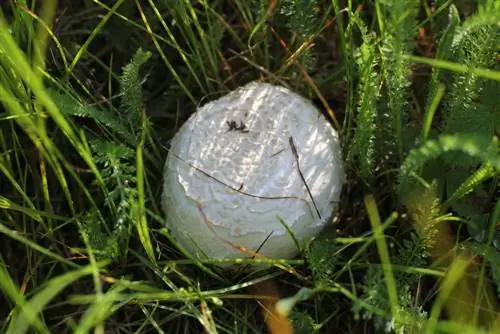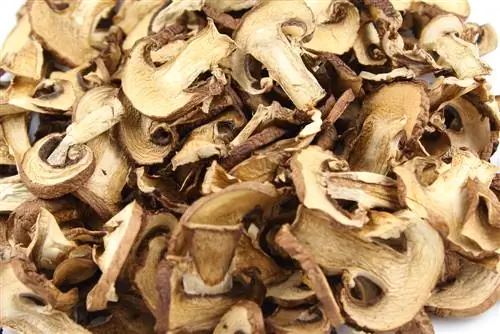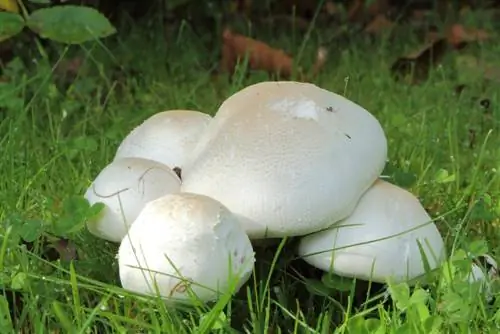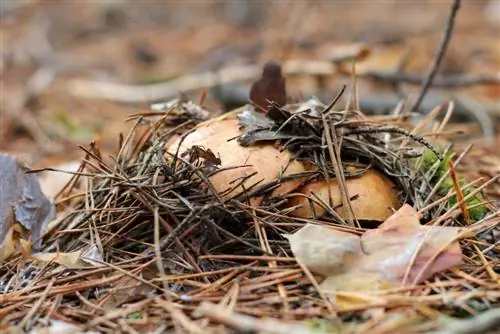- Author admin [email protected].
- Public 2023-12-16 16:46.
- Last modified 2025-01-23 11:21.
White and brown mushrooms are omnipresent in supermarkets: with around 64,000 tons of mushrooms produced, the cultivated mushroom is one of the most popular mushrooms in Germany. However, this belongs to a different species, the two-spored Egerling. However, the meadow mushroom tastes more aromatic and more like “mushroom”.
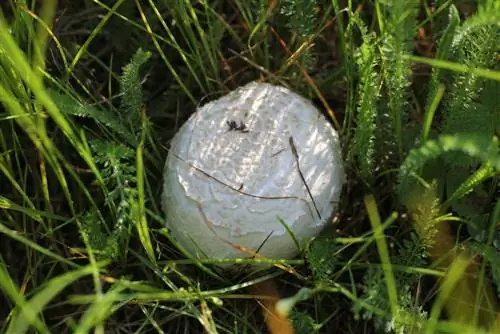
When is the best time to collect wild mushrooms?
Meadow mushrooms are best collected between June and October, especially after summer downpours or thunderstorms. Pay attention to meadows and lawns, especially cow pastures and organically farmed areas.
Mushroom season is from June to October
The main collection time for meadow mushrooms is summer. You will find them in meadows and lawns, especially after a summer downpour or even a violent summer thunderstorm. Between June and October you can always go hunting and search well-known mushroom meadows. Like the giant bovist, however, the meadow mushroom does not tolerate artificially fertilized meadows - so you are likely to be successful in your search in cow pastures as well as in organically farmed areas.
Caution, poisonous
But be careful: the tasty meadow mushroom can easily be confused with very similar poisonous mushrooms such as the death cap and the poisonous carbolic mushroom. The carbolic Egerling in particular can often be found where meadow mushrooms grow - sometimes the individual groups even mix. Therefore, you should precisely identify the individual mushrooms based on their characteristics.
Typical identifying features of the meadow mushroom
You can recognize a meadow mushroom by these characteristics:
Hat
The cap is closed and spherical when young, open and hemispherical when mature. Very old specimens even spread completely. The hat can be up to ten centimeters or larger in diameter.
Slats
The lamellae are pink when young. In older mushrooms they turn brown, sometimes even black.
Stem
The stem is about as strong as a finger or thumb. It also has a ring.
Meat
Cap and stem are always white. The color does not change with age. The smell is pleasantly mild and mushroomy.
In addition, meadow mushrooms have no tubers at the end of the stem, which is why you can use this feature to distinguish them from the poisonous death cap mushrooms. Only the edible aniseed mushroom, a relative of the meadow mushroom, has a slanting bulb at the base of the stem. This turns yellow when touched.
Distinguishing poisonous mushrooms
If the supposed meadow mushroom smells unpleasantly of carbolic, ink or “hospital” and the stem flesh turns chrome yellow when cut, it is the poisonous carbolic mushroom. Please throw this away immediately! The highly poisonous green death cap also looks very similar to the meadow mushroom. It leads to numerous cases of poisoning every year, even if it doesn't actually grow in meadows but only in the forest. However, if there are trees in the meadow or the meadow is on the edge of the forest, the green death cap mushroom will venture forward. You can recognize it by its typically thick, bulbous foot.
Tip
If you want to be on the safe side, you can also grow mushrooms all year round in your cellar at home.

